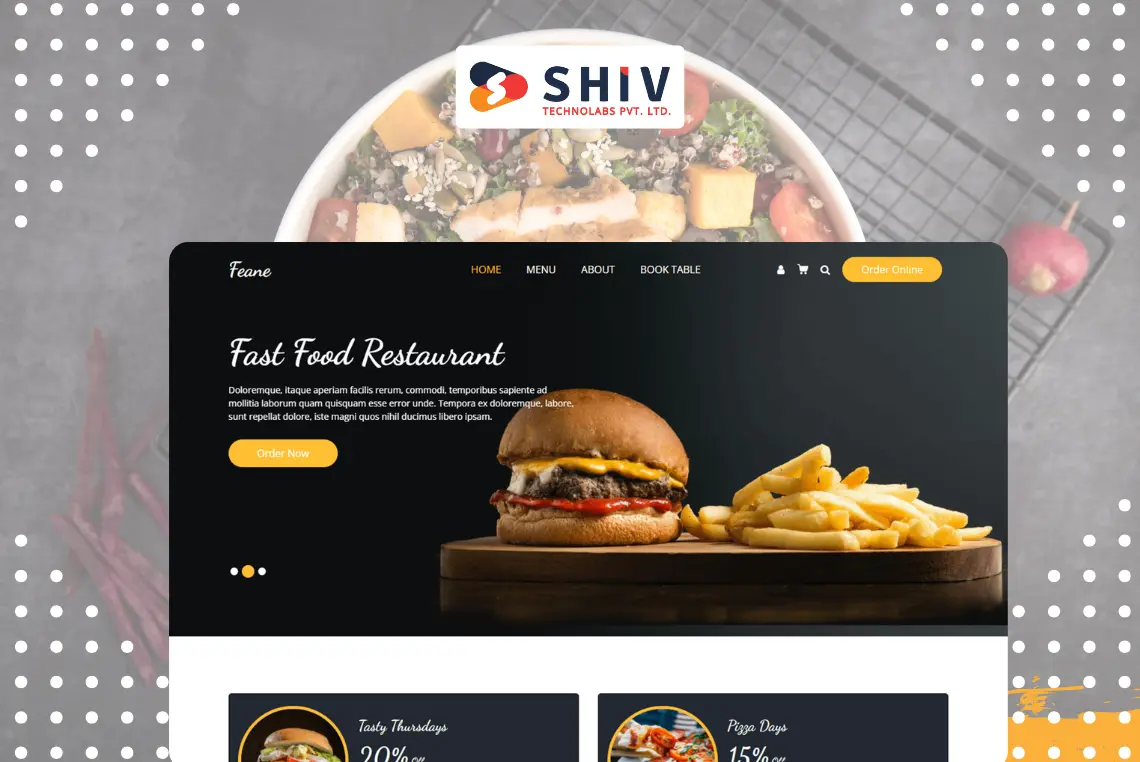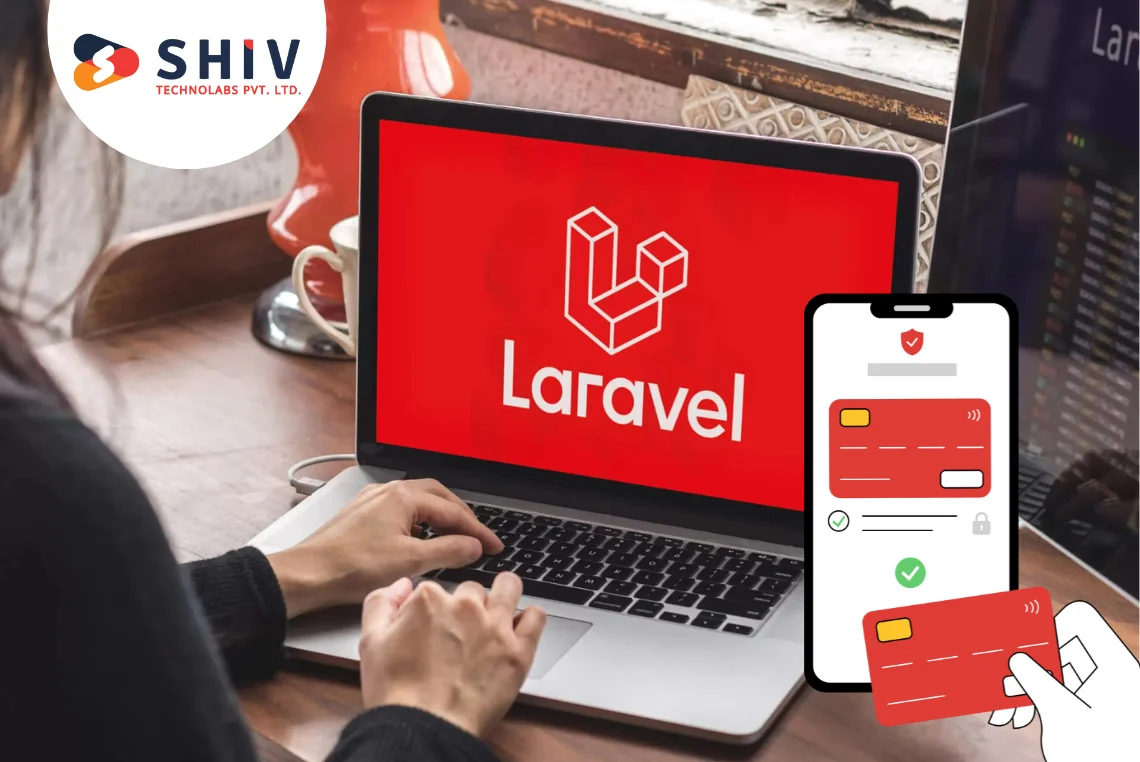Table of Contents
Selling food online isn’t just about putting items on a webpage—it’s about building trust, showcasing quality, and making it easy for people to buy.
When we worked on the Kai Gourmet food selling website, our goal was clear: create a smooth buying experience for a premium seafood brand without overcomplicating the tech.
From user-friendly product pages to real-time shipping integrations, every part of the platform was built to match the brand’s tone and scale with customer demand.
We’ve taken insights from that project to guide you through each step of building your food-selling website—from planning the setup to managing rules, payments, and delivery.
How To Sell Food Online on a Website – 16 Steps That Cover Everything
Selling food online isn’t just about uploading product images and waiting for orders. From choosing the right food category to managing deliveries and building your brand, every step plays a role in your success.
Let’s get started!
Step 1: Understand Food Selling Laws

Before you start selling food online through your website, you must follow food safety regulations and legal requirements that apply in your country or state. Selling food is not like selling clothing or electronics—health, safety, and packaging laws are stricter.
Start by checking whether your food product needs a license or registration. In most cases, you’ll need to register with a food safety authority.
For example, in the US, it would be the FDA (Food and Drug Administration) or your local state’s health department.
Here’s what you may need to arrange:
- Business registration: You’ll need to register as a sole proprietor, partnership, or private limited company.
- Food license or permit: Most regions require a food license if you’re producing, packaging, or selling food, even from home.
- Labeling compliance: Your packaging must list ingredients, nutritional facts, manufacturing date, expiry date, batch number, and allergen information.
- Hygiene and safety checks: If you’re cooking or processing food at home or in a shared kitchen, it must meet basic hygiene standards. Some cities may inspect your space before granting a license.
- Packaging regulations: For edible items, you must use food-grade packaging that doesn’t contaminate the product.
If you plan to deliver food across state lines or ship internationally, check if additional permits are needed. Local delivery rules might differ from interstate or cross-border shipments, especially for perishable goods like meat, dairy, or frozen meals.
Many food sellers start small, but even a home-based food business must meet basic legal standards. Not following the rules could lead to fines or a forced shutdown.
✅ Pro Tip: Consult a local food license consultant or visit your government’s food safety website. It’s better to get clear answers up front than fix problems later.
Step 2: Choose Your Food Category
You can sell anything from ready-to-eat meals, snacks, bakery items, frozen food, and beverages to health-focused or regional products. Start with a category you understand well or have access to.
What sells best on a website?
Packaged goods, snacks, dry mixes, and sweets often sell better than fragile or high-risk perishable items. Subscription boxes, build-your-own snack kits, or meal bundles also attract repeat buyers.
Can I sell home-cooked food?
Yes, but this depends on your local laws. Many countries allow small-batch or home-cooked food sales if hygiene standards are met and a license is obtained.
Step 3: Pick a Selling Approach
You can either make and sell your own food products or curate food from other vendors. Each approach comes with its own process, cost, and control level.
Comparison Table: Produced vs. Curated Food Selling
| Feature | Produced (Make Your Own) | Curated (Resell from Others) |
|---|---|---|
| Startup Cost | Moderate to high (equipment, licenses) | Lower (no production cost) |
| Control Over Product | Full control (recipe, taste, quality) | Limited to what suppliers offer |
| Time Investment | High: Involves cooking, prepping, and packing | Low: Focus is on sourcing and packaging |
| Brand Uniqueness | High: Original recipes = unique brand | Lower: Depends on curation style |
| Risk Level | Higher inventory, spoilage risks | Medium: Depends on supplier reliability |
| Best For | Bakers, chefs, and home cooks | Food bloggers, influencers, or online retailers |
Some food businesses also combine both methods — they may produce a core range in-house and supplement it with curated items to increase variety without stretching operations.
Step 4: Find Ingredients or Suppliers
Whether you’re making food or curating products, having the right suppliers is critical. Here’s how to go about it:
1. Decide What You Need
Start by listing everything—raw ingredients, packaging materials, labels, or ready-to-ship products (if curating).
2. Search Local First
Look for local farmers, wholesale markets, or food cooperatives. You’ll save on shipping and get fresher ingredients.
3. Explore B2B Marketplaces
Websites like Alibaba or local food distributor directories often have vendor listings with MOQs and pricing.
4. Request Samples
Always test before committing. Check quality, consistency, shelf life, and packaging.
5. Plan for Backup
Always have at least one backup supplier in case of delays or shortages.
If you’re curating packaged goods, make sure the suppliers already follow FDA or relevant packaging and labeling standards.
A reliable supplier keeps your brand reputation safe. So don’t go with the cheapest — go with the most consistent.
Step 5: Plan Your Production Setup

Once you’ve finalized your product and ingredients, it’s time to figure out where and how you’ll prepare your food. The setup doesn’t need to be expensive, but it must be efficient and safe.
- Use your home kitchen if allowed by local regulations (great for baked goods, snacks, and small batches)
- Consider a cloud kitchen or shared cooking space if you plan to scale fast
- Rent a commercial kitchen if your food involves heavy prep, meat handling, or packaging
- Set up dedicated zones for raw materials, cooking, and packing to avoid contamination
- Keep storage units separate for perishable and dry goods
- Invest in basic equipment that saves time and reduces error (weighing scale, sealing machine, date labeler)
Your kitchen is not just where the food is made — it’s where your product quality is decided. Choose a setup that matches your scale, budget, and food type.
Step 6: Build Your Food Brand
People don’t just buy food—they buy trust, taste, and experience. Your brand gives them a reason to choose you over others. From naming to packaging, everything should reflect the values behind your product.
Key Elements of a Strong Food Brand
- Business name — Short, memorable, and easy to spell
- Logo — Simple, clean, and scalable for web and labels
- Color palette — Choose 2–3 consistent brand colors
- Typography — Use easy-to-read fonts for your website and packaging
- Tone of voice — Casual, friendly, healthy, traditional—pick one that fits
- Packaging design — Must reflect freshness, safety, and product quality
- Storytelling — Share why you started, how you make your food, and what makes it special
A clear, focused brand helps your food business grow faster online. You don’t need to be fancy—just consistent.
Step 7: List All Startup Costs
Skipping cost planning can hurt your business before your first sale. Many new food sellers either underestimate costs or forget key expenses. Here are common mistakes you should avoid:
- Not budgeting for packaging: Good packaging costs more than plastic wrap. Factor in containers, labels, and seals.
- Ignoring website and domain fees: Even basic eCommerce platforms have monthly costs. Don’t forget custom domain, hosting, or app add-ons.
- Skipping marketing costs: Ads, influencers, samples, and email tools add up. Plan a starting budget, even if small.
- Forgetting about licensing or permits: Food licenses and renewals are often paid annually. Add them to your fixed costs.
- No buffer for hidden or one-time expenses: Think: damaged goods, extra delivery charges, or branding redesigns.
✅ Pro Tip: Create a simple spreadsheet. Divide costs into one-time (equipment, setup) and recurring (ingredients, platform, marketing). This gives you a clear break-even point.
Check Out Our Startup Development Services!
Step 8: Set the Right Prices
Pricing isn’t just about covering your ingredient costs. You also need to include packaging, delivery, website expenses, and a profit margin that supports growth.
Let’s break it down through a few real-life examples:
Scenario 1: The Underpricer
Bruce sells homemade cookies at $3.00 per pack
- Ingredients: $1.20
- Packaging: $0.40
- Delivery (local): $1.00
- Total cost: $2.60
- Profit left: $0.40
✅ Pros: Lower price attracts buyers
❌ Cons: Leaves no room for growth or reinvestment
Scenario 2: The Balanced Seller
Jennifer prices her protein bars at $6.00 each
- Ingredients + packaging: $2.00
- Delivery: $1.00
- Profit margin: $3.00
✅ Pros: Covers all costs, allows for ad spend, and scaling
❌ Cons: Needs brand trust to justify the price
Scenario 3: The Bundler
Sam sells a 5-item snack box at $25.00
- Product cost (total): $12.50
- Packaging: $2.00
- Shipping: $3.00
- Profit: $7.50 per order
✅ Pros: Higher order value, better shipping economics
❌ Cons: Needs more inventory planning
💡 Tip: Always price based on total cost, not just ingredients. Leave enough margin for delivery issues, ads, and updates.
Step 9: Organize Inventory and Storage
Inventory management is more than just counting what’s left. It’s about tracking freshness, avoiding waste, and making sure you’re ready for the next order.
Here’s how to build your inventory system step by step:
📅 Week 1: Start With Manual Tracking
- Use a simple spreadsheet to list ingredients and stock
- Add columns for quantity, expiry date, and supplier
- Do a daily check until your process feels stable
📅 Week 2–3: Set Minimum Stock Levels
- Identify your fastest-moving items
- Set reorder points to avoid last-minute supplier calls
- Group stock by batch or delivery date
📅 Week 4: Organize Storage Space
- Separate raw materials from finished products
- Label everything clearly with the date of arrival
- Use airtight containers and shelves by category
📅 Month 2+: Upgrade to Tools (If Needed)
- Use inventory software like Zoho Inventory, Sortly, or Square
- Automate alerts when stock runs low
- Sync inventory with your website to avoid overselling
A clean, consistent inventory setup helps avoid expired products, failed deliveries, and unhappy buyers. It doesn’t need to be complex—it just needs to be reliable.
Step 10: Prepare for Product Growth
================================
Myth: I need a large team before adding new products.
Fact: You can start small—test new flavors or seasonal packs with just a few extra ingredients and packaging tweaks.
================================
Myth: My first product is enough.
Fact: Expanding your product line helps attract repeat buyers and increase cart value.
================================
Myth: Growth means bigger batches.
Fact: Growth can also mean smarter bundles, better shelf life, or improved packaging.
================================
Growth doesn’t always mean scale—it can also mean refinement.
Step 11: Add Shipping and Delivery Options
✅ Do:
- Offer local delivery if you’re handling fresh food
- Use insulated packaging for frozen or heat-sensitive items
- Add clear delivery time estimates on your website
❌ Don’t:
- Rely on one shipping partner without backups
- Ship perishable goods without proper packing
- Hide shipping fees — customers hate surprise costs
Shipping can make or break a food business. Make it predictable and safe.
Step 12: Build Your Food Website
To start selling from your site, you’ll need three key tools:
- eCommerce Platform: Shopify, WooCommerce, or custom site (built by developers like Shiv Technolabs)
- Payment Gateway: Stripe, PayPal, Razorpay, or Square
- Logistics Plugin: Shippo, Easyship, or manual setup for local delivery
Also include product photos, “About” page, contact info, and clear policies. Your website should feel like an extension of your kitchen—clean, welcoming, and functional.
Step 13: Write Product Pages That Sell
- Use clear titles (e.g., “Almond Butter Protein Balls – 6-Pack”)
- Include ingredients, storage instructions, and allergens
- Add high-quality photos taken in natural light
- Write short, benefit-driven descriptions
- Use tags (vegan, gluten-free, no preservatives) to help buyers filter
Make each page feel like a mini-menu. Let the food speak for itself.
Step 14: Add Legal Pages and Disclaimers
Include these pages to protect your business:
- Privacy Policy (especially if collecting emails or running ads)
- Return & Refund Policy (clear conditions help avoid disputes)
- Terms of Use (covers website usage and copyright)
- Shipping & Delivery Policy
- Allergy Disclaimer (critical for food items)
Legal pages aren’t optional—they build trust and avoid trouble.
Step 15: Promote Your Website Online
Promote your store using 3 core channels:
- Search (Google Ads, SEO) – Appear when buyers search for “buy homemade salsa online” or similar
- Social Media (Instagram, Pinterest) – Great for food visuals, behind-the-scenes, and stories
- Email (Klaviyo, Mailchimp) – Use for order updates, restock alerts, and discount campaigns
You don’t need to be everywhere—just consistent where your audience hangs out.
Step 16: Keep Testing and Improving
Here’s a simple cycle to follow every month:
- Check sales data – What’s selling? What isn’t?
- Read customer feedback – Look for patterns or recurring issues
- Make changes – Tweak pricing, improve packaging, or add FAQs
- Repeat – Small fixes stack up over time
Running a food website isn’t set-and-forget. The best sellers keep testing and adjusting.
Start Selling from Your Own Website
Selling food on your own website gives you full control over how your brand is seen, how your products are priced, and how customers interact with your business.
It’s not just about putting your recipes online — it’s about building a reliable system that works from day one and grows with your product.
If you’re looking for a development partner who understands the unique needs of food businesses, Shiv Technolabs is ready to help.
From building custom eCommerce websites to integrating delivery systems and payment gateways, we’ve already helped brands like Kai Gourmet turn their vision into a working food store.
Whether you’re just starting or planning to scale, our team can guide you through every technical step.
Ready to bring your food brand online the right way? Schedule a call with Shiv Technolabs

























